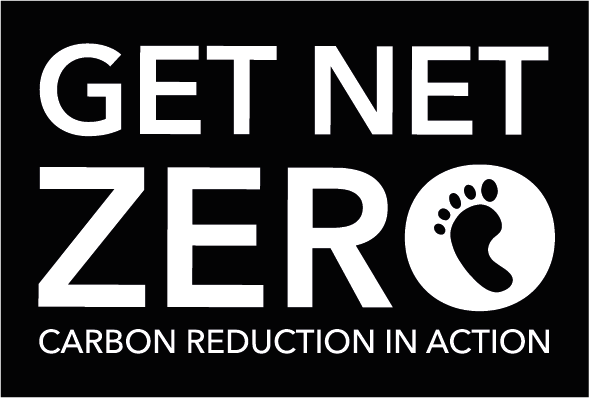How do you solve a problem like ISO 14001?
Posted on
The International Standard for Environmental Management Systems ISO 14001 is a tool for monitoring and managing the impact of an organisation's activities on the environment. It fits neatly alongside a range of other management systems (18001, 9001, 20121 etc) and it helps thousands of organisations manage their impacts and continuously improve their performance. It is commonly used in public sector procurement as a proxy for good environmental practice in potential suppliers.
As a lead auditor for ISO 14001, our Managing Director was responsible for a ISO 14001 and ISO 20121 system covering major venues, offices and outdoor events. Here she shares her thoughts on the system that helped shape Get Net Zero but why it hasn’t worked for a lot of organisations that have tried using it.
Not everyone will agree with this blog and I will say up front that that ISO 14001 works well for process-based organisations like engineering companies and manufacturers where an audit-based process of continuous improvement is understood and embedded. I also acknowledge that important elements of the Get Net Zero process are based on the same management systems approach, albeit with more of a focus on positive action to tackle climate change.
Here’s why ISO 14001 doesn’t work for everyone:
Regulation
With its focus on legal compliance, ISO 14001 doesn’t put enough emphasis on making improvements that do not have a legal implication. Most businesses don’t have to reduce Carbon emissions and there is not really any effective regulation to make anyone reduce their environmental impact if they don’t want to. There are taxes and some regulations, but fundamentally it is down to most businesses themselves to take action on climate change. Furthermore, the early signs are that the UK government will be making some current environmental laws and regulations voluntary as it moves away from the EU regime.
Cowboys
Some companies say they can both write and then certify an ISO 14001 system, ticking the box for any organisation needing to get ISO 14001 for a tender. Even environmental consultants find it difficult to tell the good guys from the cowboys, so a busy procurement officer trying to assess a tender is unlikely to be able to distinguish a genuine ISO 14001 system from a box ticking one.
ISO in procurement
It is starting to change a bit now, but many organisations, especially councils and NHS trusts ask for ISO 14001 as evidence of the environmental credentials of the supplier in a procurement process. There are three big problems with this. Firstly, cowboys – see above. Secondly, cost – getting an externally audited ISO 14001 comes at a significant cost, both in terms of the audits themselves and the staff time to run the system. This is a barrier to many organisations. Thirdly, scoring. Some public sector contracts ask for ISO 14001 and don’t score it, making it an unnecessary burden for potential suppliers. Get Net Zero provides a more effective system that can show exactly what the supplier is doing to improve their environmental performance.
The audit-based approach
No-one likes being criticised and everyone performs better when they’re hard work is recognised. With its system of CARs (Corrective Action Requests) and focus on things that aren’t working rather than things that are, people involved with delivering ISO 14001 can easily become disillusioned (as did I). In organisations facing cuts, no-one wants the things that aren’t working in their department officially recorded and highlighted to senior managers, so there is a tendency to hide issues from internal and external auditors, making the system ineffective.
Management buy-in
The recent changes to the ISO 14001 standard have improved this common issue, but the issues here are systemic. Senior Managers don’t care about the detail of the Environmental Management System, they want good news about improvements and achievements. So much time is spent by those responsible for the EMS in administering the system that it’s hard for to keep focused on the big picture that management want to see.
Marketing teams and most customers don’t get (or care about) ISO 14001
Businesses are better at making money than saving it, so efficiency is rarely celebrated as much as increasing sales or sexy new innovations. Most energy saving initiatives are invisible and KWh and cubic meters of water saved are hard to get excited about, so tend not to get the recognition they deserve, particularly in the age of social media.
The focus is on the system itself rather than the outcomes
One of the most frustrating things about external audits for me was getting advisory actions or Corrective Action Requests for document control issues – sometimes for something as simple as getting a version number wrong. It became clear that it didn’t matter how little you were doing as an organisation, as long as the Environmental Management System accurately said what you were or weren’t doing, then you pass the audit. By starting with the Carbon footprint of the organisation and then working out what actions to take, Get Net Zero helps organisations keep focused on the ultimate goal of carbon neutrality and not get bogged down in the paperwork.
Conclusion
ISO 14001 is a useful tool for some organisations, but it doesn’t meet the needs of many modern businesses wanting to reduce their impact on the environment and Greenhouse Gas emissions. Get Net Zero addresses these issues with the approach and focuses on encouraging good behaviour rather than penalising bad.

Add a comment: